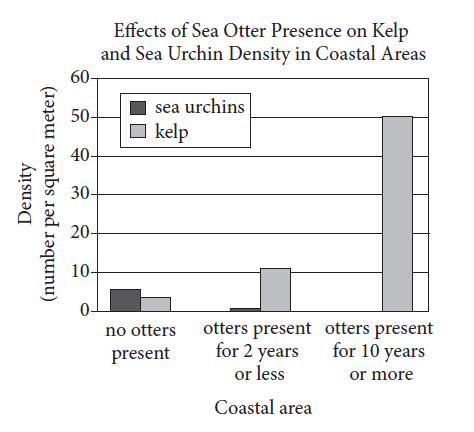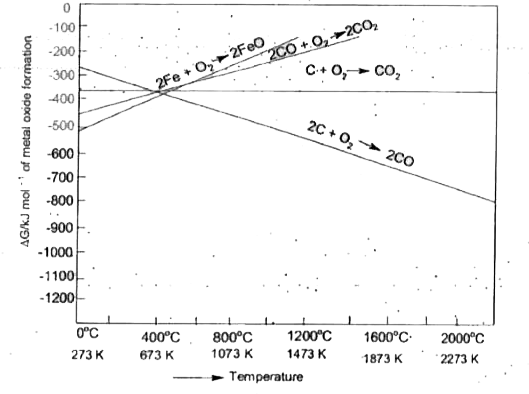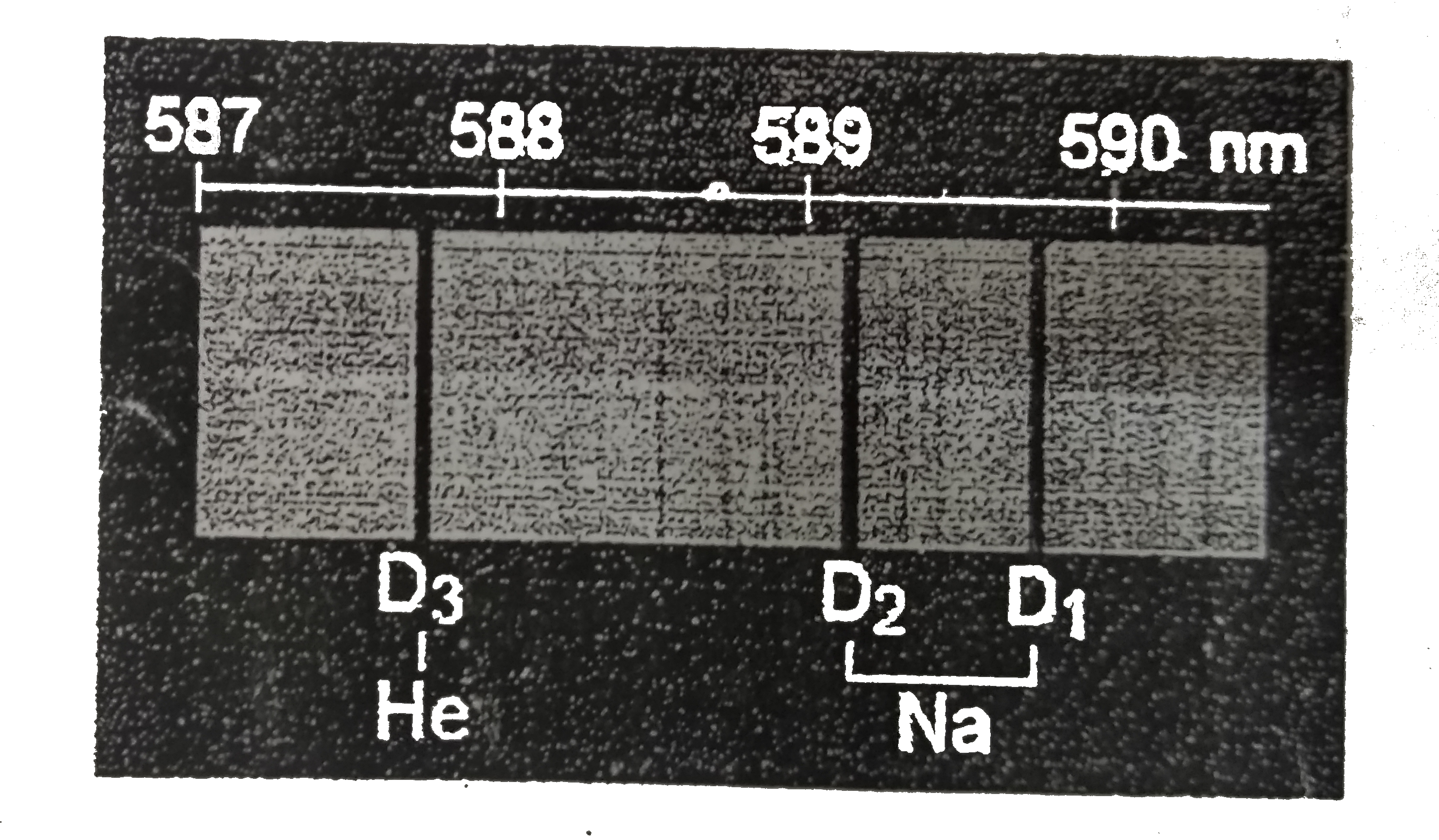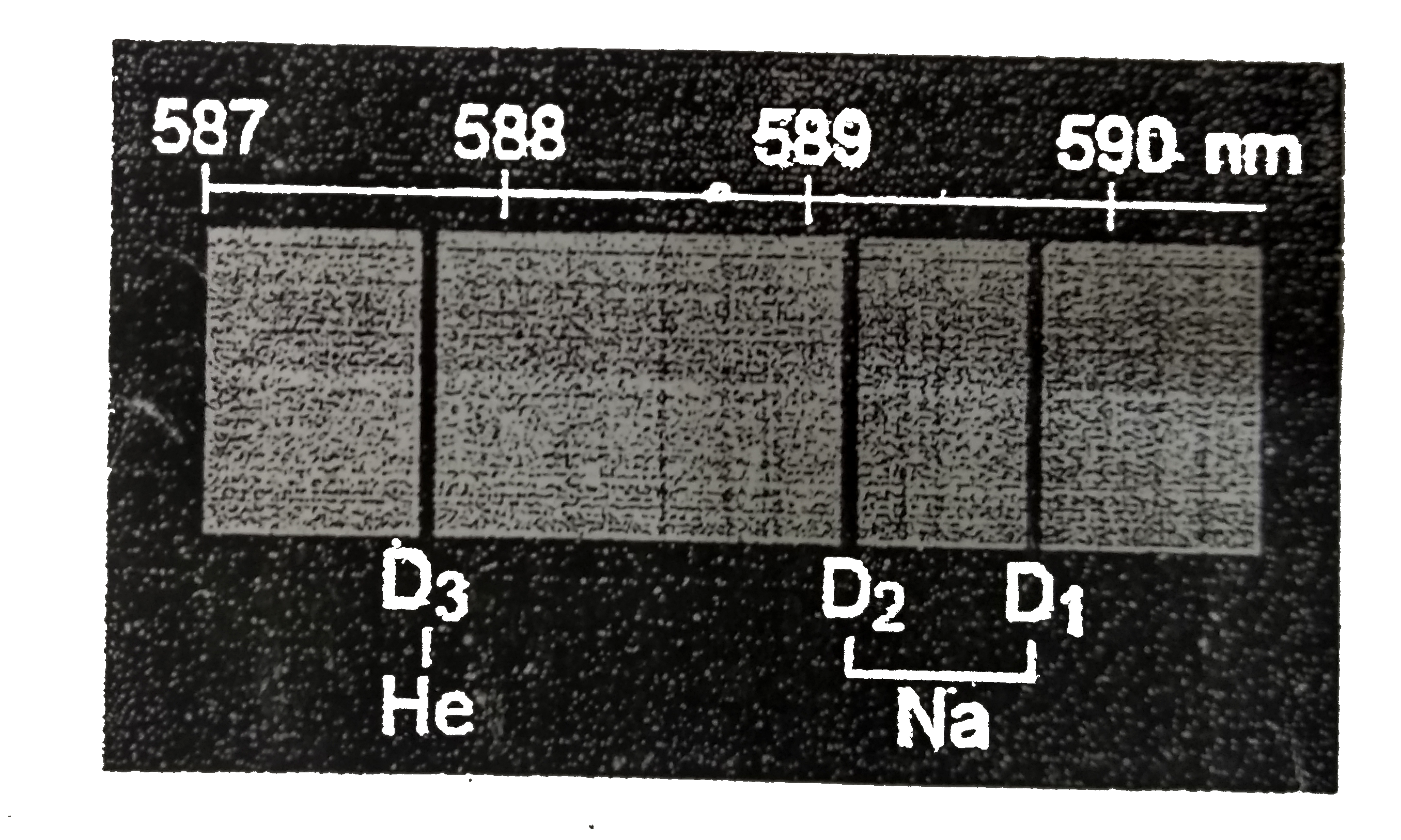Red hot carbon will remove oxygen from the oxides and but not from will remove oxygen from . Use this evidence to deduce the order of activity of the three metals and putting the most reactive first.
The correct Answer is:C
Step by step video & image solution for Red hot carbon will remove oxygen from the oxides XO and Yo but not from ZO.Y will remove oxygen from XO. Use this evidence to deduce the order of activity of the three metals X,Y, and Z, putting the most reactive first. by Chemistry experts to help you in doubts & scoring excellent marks in Class 12 exams.
Topper's Solved these Questions
- BOOK - RESONANCE ENGLISHCHAPTER - ELECTROCHEMISRYEXERCISE - Comprehension30videos
ELECTROCHEMISRY
- BOOK - RESONANCE ENGLISHCHAPTER - ELECTROCHEMISRYEXERCISE - Exercise 37videos
ELECTROCHEMISRY
- BOOK - RESONANCE ENGLISHCHAPTER - ELECTROCHEMISRYEXERCISE - Subjective Questions14videos
ELECTROCHEMISRY
- BOOK - RESONANCE ENGLISHCHAPTER - ELECTRO CHEMISTRYEXERCISE - PHYSICAL CHEMITRY (ELECTROCHEMISTRY)53videos
ELECTRO CHEMISTRY
- BOOK - RESONANCE ENGLISHCHAPTER - EQUIVALENT CONCEPT & TITRATIONSEXERCISE - Part -IV22videos
EQUIVALENT CONCEPT & TITRATIONS
Similar Questions
Red hot carbon removes oxygen from the oxide XO and YO but not from ZO. Y will remove oxygen from XO. Use this evidence to deduce the order of activity of the three metals X, Y and Z putting the most active first.
View SolutionA compound formed by elements X and Y has a cubic structure in which X atoms are at the corner of the cube and also at the face centers. Y atoms are present at the body centre and at the edge centre of the cube.
a. Celculate (i) Zeff' (ii) total number of atoms in the cube, and (iii) formula of the compound.
b. If all the atoms are removed from one of the body diagonals of the cube, calculate (i) Zeff' (ii) total number of atoms in the cube, and (iii) formula of the compound.
c. If all the atoms from the diagonals of the one of the face of the cube are removed, calculate (i) Zeff' (ii) total number of atoms in the cube, and (iii) formula of the compound.
d. If all the atoms are removed from one of the plane passing through the middle of t he cube, calculate (i) Zeff' (ii) total number of atoms in the cube, and (iii) formula of the compound.
e. If all the atoms are removed from one of the axes passing through one of the face centres of the cube, calculate (i) Zeff' (ii) total number of atoms in the cube, and (iii) formula of the compound.View Solution
Knowledge Check
- Question 1 - Select One
Environmentalist Otters
It has long been known that the sea otters (23) living along the West Coast of North America help––––––––––––––––––––––––––––––––––––––––––––––––––––––– keep kelp forests in their habitat healthy and vital. They do this by feeding on sea urchins and other herbivorous invertebrates that graze voraciously on kelp. With sea otters to keep the population of sea urchins in check, kelp forests can flourish. In fact, (24) two years or less of sea otters can completely eliminate sea urchins––––––––––––––––––––––––––––––––––––––––––––––––––––––––––––––––––––––– in a coastal area (see chart).

Adapted from David O. Duggins, “Kelp Beds and Sea Otters: An Experimental Approach.” ©1980 by the Ecological Society of America.
Without sea otters present, (25) nevertheless–––––––––––––, kelp forests run the danger of becoming barren stretches of coastal wasteland known as urchin barrens.
[1] What was less well-known, until recently at least, was how this relationship among sea otters, sea urchins, and kelp forests might help fight global warming. [2] The amount of carbon dioxide in the atmosphere has increased 40 percent (26) . [3] A recent study by two professors at the University of California, Santa Cruz, Chris Wilmers and James Estes, (27) suggests, that––––––––––––––– kelp forests protected by sea otters can absorb as much as twelve times the amount of carbon dioxide from the atmosphere as those where sea urchins are allowed to (28) devour–––––––– the kelp. [4] Like (29) their––––– terrestrial plant cousins, kelp removes carbon dioxide from the atmosphere, turning it into sugar fuel through photosynthesis, and releases oxygen back into the air.
[5] Scientists knew this but did not recognize (30) how large a role they played–––––––––––––––––––––––––––––– in helping kelp forests to significantly decrease the amount of carbon dioxide in the atmosphere. [6] Far from making no difference to the ecosystem, the presence of otters was found to increase the carbon storage of kelp forests by 4.4 to 8.7 megatons annually, offsetting the amount of carbon dioxide emitted by three million to six million passenger cars each year. (31)
Wilmers and Estes caution, however, that (32) having more otters––––––––––––––––––––– will not automatically solve the problem of higher levels of carbon dioxide in the air. But they suggest that the presence of otters provides a good model of how carbon can be sequestered, (33) or removed, from––––––––––––––––––– the atmosphere through the management of animal populations. If ecologists can better understand what kinds of impacts animals might have on the environment, Wilmers contends, “there might be opportunities for win-win conservation scenarios, whereby animal species are protected or enhanced, and carbon gets sequestered.”
Where is the most logical place in this paragraph to add the following sentence?
What Wilmers and Estes discovered in their study, therefore, surprised them.AAfter sentence 1BAfter sentence 3CAfter sentence 4DAfter sentence 5 - Question 2 - Select One
Environmentalist Otters
It has long been known that the sea otters (23) living along the West Coast of North America help––––––––––––––––––––––––––––––––––––––––––––––––––––––– keep kelp forests in their habitat healthy and vital. They do this by feeding on sea urchins and other herbivorous invertebrates that graze voraciously on kelp. With sea otters to keep the population of sea urchins in check, kelp forests can flourish. In fact, (24) two years or less of sea otters can completely eliminate sea urchins––––––––––––––––––––––––––––––––––––––––––––––––––––––––––––––––––––––– in a coastal area (see chart).

Adapted from David O. Duggins, “Kelp Beds and Sea Otters: An Experimental Approach.” ©1980 by the Ecological Society of America.
Without sea otters present, (25) nevertheless–––––––––––––, kelp forests run the danger of becoming barren stretches of coastal wasteland known as urchin barrens.
[1] What was less well-known, until recently at least, was how this relationship among sea otters, sea urchins, and kelp forests might help fight global warming. [2] The amount of carbon dioxide in the atmosphere has increased 40 percent (26) . [3] A recent study by two professors at the University of California, Santa Cruz, Chris Wilmers and James Estes, (27) suggests, that––––––––––––––– kelp forests protected by sea otters can absorb as much as twelve times the amount of carbon dioxide from the atmosphere as those where sea urchins are allowed to (28) devour–––––––– the kelp. [4] Like (29) their––––– terrestrial plant cousins, kelp removes carbon dioxide from the atmosphere, turning it into sugar fuel through photosynthesis, and releases oxygen back into the air.
[5] Scientists knew this but did not recognize (30) how large a role they played–––––––––––––––––––––––––––––– in helping kelp forests to significantly decrease the amount of carbon dioxide in the atmosphere. [6] Far from making no difference to the ecosystem, the presence of otters was found to increase the carbon storage of kelp forests by 4.4 to 8.7 megatons annually, offsetting the amount of carbon dioxide emitted by three million to six million passenger cars each year. (31)
Wilmers and Estes caution, however, that (32) having more otters––––––––––––––––––––– will not automatically solve the problem of higher levels of carbon dioxide in the air. But they suggest that the presence of otters provides a good model of how carbon can be sequestered, (33) or removed, from––––––––––––––––––– the atmosphere through the management of animal populations. If ecologists can better understand what kinds of impacts animals might have on the environment, Wilmers contends, “there might be opportunities for win-win conservation scenarios, whereby animal species are protected or enhanced, and carbon gets sequestered.”
At this point, the writer is considering adding the following information.
since the start of the Industrial Revolution, resulting in a rise in global temperatures
Should the writer make this addition here?AYes, because it establishes the relationship between the level of carbon dioxide in the atmosphere and global warming.BYes, because it explains the key role sea otters, sea urchins, and kelp forests play in combating global warming.CNo, because it contradicts the claim made in the previous paragraph that sea otters help keep kelp forests healthy.DNo, because it mentions the Industrial Revolution, blurring the focus of the paragraph.
Oxygen differs from the other elements of the group. Compounds of oxygen with metals are more ionic in nature and hydrogen bonding is more important for oxygen compounds. Oxygen is never more than divalent beacasue when it hs formed two covalent bonds, there are no low energy orbitals which can be used for form. further bonds. However, the elements S,Se,Te and Po have empty d- orbitals which may be used for bonding, and they can form four or six bonds by unpairing electrons. The higher oxidation states become less stable on decending the group.
The bond between S and O, or Se and O, are much shorter than might be expected for a single bond owing to ρπ−dπ interaction between the p- orbital of oxygen and d- orbital of S or Se.
Which one of the following orders represents the correct order for the properties indicated against them?View SolutionMetals are extracted from their ores by a wide variety of techniques. The most common ores are oxides. Most metals are obtained by direct treatment of theirs ores with chemical agents, but the extraction of certain others require electrolysis. An example of the former type of process is the extraction of iron from its oxide, described by the following equation :
Fe2O3+3C→2Fe+3CO
The relative ease of extraction of a metal from its oxide can be estimated using the Ellingham diagram, as shown in the figure.
The diagram plots the free energies of formation of various oxides per mole of consumed oxygen as a function of absolute temperature.

Which of the following best explains why the free energy of formation of Fe2O3 becomes less negative as the temperature is increased.View SolutionIn 1894, Lord Rayleigh reported that the mass of chemically prepared nitrogen was different from that of nitrogen extracted from the atmosphere, as shown in Tables 1 and 2. Latter, this difference was attributed to the presence of argon in atmospheric nitrogen. The masses of gases were mearsured by using a glass vessel with a known volume under atmospheric pressure (1.013×105Pa).
∣∣ ∣ ∣ ∣ ∣ ∣ ∣∣From nitric oxide2.3001gFrom nitrous oxide2.2990gFrom amonium nitrite purified at a red heat2.2987gFrom urea2.2985gFrom ammonium nitrite purified in the cold2.2987gMean2.2990g∣∣ ∣ ∣ ∣ ∣ ∣ ∣∣
∣∣ ∣ ∣ ∣∣O2was removed by hot copper(1892)2.3103gO2was removed by hot iron(1893)2.3100gO2wasremovedbyferroushydrate(1894)2.3102gMean2.3102g∣∣ ∣ ∣ ∣∣
Ramsay and cleve discovered helium in cleveite (a mineral consiting of uranium oxide and oxides of lead, thorium, and rare earths, an impure variety of uraninite) independently and virtually simultaneously in 1895. The gas extracted from the rock showed a unique spectroscopic line at around 588 nm (indicated by D3 in Figure 1), which was fist observed in the spectrum of solar prominence during a total eclipse in 1868, near the well-known D1 and D2 lines of sodium.

Which––––––– equation explains the occurrence of helium in cleveite among [A] to [D] below? Mark one.View SolutionIn 1894, Lord Rayleigh reported that the mass of chemically prepared nitrogen was different from that of nitrogen extracted from the atmosphere, as shown in Tables 1 and 2. Latter, this difference was attributed to the presence of argon in atmospheric nitrogen. The masses of gases were mearsured by using a glass vessel with a known volume under atmospheric pressure (1.013×105Pa).
∣∣ ∣ ∣ ∣ ∣ ∣ ∣∣From nitric oxide2.3001gFrom nitrous oxide2.2990gFrom amonium nitrite purified at a red heat2.2987gFrom urea2.2985gFrom ammonium nitrite purified in the cold2.2987gMean2.2990g∣∣ ∣ ∣ ∣ ∣ ∣ ∣∣
∣∣ ∣ ∣ ∣∣O2was removed by hot copper(1892)2.3103gO2was removed by hot iron(1893)2.3100gO2wasremovedbyferroushydrate(1894)2.3102gMean2.3102g∣∣ ∣ ∣ ∣∣
Ramsay and cleve discovered helium in cleveite (a mineral consiting of uranium oxide and oxides of lead, thorium, and rare earths, an impure variety of uraninite) independently and virtually simultaneously in 1895. The gas extracted from the rock showed a unique spectroscopic line at around 588 nm (indicated by D3 in Figure 1), which was fist observed in the spectrum of solar prominence during a total eclipse in 1868, near the well-known D1 and D2 lines of sodium.

Identify––––––––– the transition relevant to the D3 line of helium among the transitions [A] to [E] indicated in Figure 2. Mark one of the following:
[A] [B] [C] [D] [E]View SolutionDespite the fact that aluminium is a reactive metal, it is a stable in air as well as in water. This is due to the formation of thin layer of oxide on the surface of aluminium metal which makes it passive for further attack. The layer is so useful, that in industry, it is purposely deposited by an electrolytic process called anodising. Reaction of aluminium with oxygen is highly exothermic and is called thermite reaction.
2Al(s)+32O2(g)→Al2O3(s)ΔfHӨ=−1670kJmol−1
This reaction finds application for welding of metal and in the metallurgical extraction of many metals from their oxides.
The limitation is that to start the reaction, high temperature is required for which an ignition mixture is required.
The reaction which is not involved in thermite process isView SolutionWhen an atom or an ion is missing from its nomal lattice site a lattice vacanecy (Schottky defect) is created. In stoichmeteric ionic crystals, a vacancy of one ion has to be accompanied by the vacancy of the oppositely charge ion in order to maintain electrical neutrality.
In a Frenkel defect an ion leaves its position in the lattice and occupies an interstitial void. This id the Frenkel defect commonly found along with the Schottky defects and interstitial. In pure alkali halides. Frenked defects are not found since the ions cannot get into the interstitial sites. Frenkel defects are found in silver halides because of the small size of the Ag+ ion. Unike Schottky defects, Frenkel defect do not change the density of the solids. in certain ionic solids (e.g., AgBr) both schottky and Frenkel defect occur.
The Defects idiscussed above do not disturb the stoichiometery of the crystalline material. there is large variety of non-stoichiometric inorganic solids which contains an excess or deficienty of one of the elements. Such solids showing deviations from the ideal stoichiometric composition from an important group of solids. For example in the vanadium oxide, VOx,x can be anywehere between 0.6 and 1.3 there are solids such as difficult to prepare in the soichiometric omposition thus, the ideal composition in compounds such as FeO is difficult to obtain (normally we get a compositiion of Fe(0.95)O but it may range from Fe0.93O to Fe0.96O). Non-stoichiometric behavious is most commonly found for transition metal compounds through is also known for some lathanoids and actinoids.
Zinc oxide loses oxygen reversible at high temperature and turns yellow in colour. the excess metal is accomodated interstitial, giving rise to electrons trapped in the neighbourhood, the enchanced electrical conductivity of the non-stoichiometric ZnO arises from these electrons.
Anion vacancies in alkali halides are produced by heating the alkali halid crystals in an atmosphere of the alkali metal vapour. when the metal atoms deposit on the surface they diffuse into the cystal and after ionisation the alkali metal ion occupies cationic vacancy whereas electron occupies anionic vacancy. Electrons trapped i anion vacancies are referred to as F-centers (From Farbe the German word for colouf) that gives rise to interesting colour in alkali halides. Thus, the excess of potassium i KCl makes the crystal appear violet and the excess of lithium in LiCl makes it pink.
Which of the following is most appropritate crystal to show Frenkel defect ?View Solution

